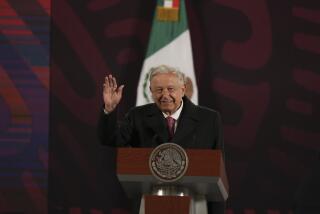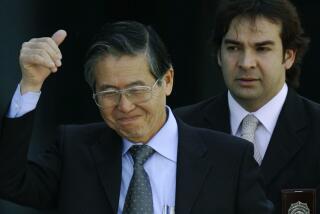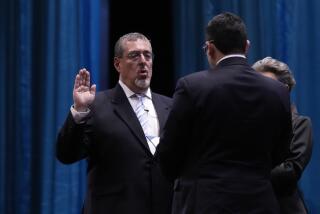Ancient and Modern Power
Alejandro Toledo was sworn in as president of Peru in a conventional ceremony, but this week the deal was sealed with the blessing of an Indian shaman on the steep terraces of Machu Picchu, the ancient Inca capital. To the sound of conch shells, Toledo made a “great offering” while the shaman begged the Andean gods to “clean the way so that Toledo can begin on a good foot.”
The Stanford-educated economist honored his Indian heritage with the gesture. But he will also need help from the World Bank, where he used to work, the International Monetary Fund, which greatly influences Peru’s economic policy, and the United States.
Toledo deserves credit for staying on a democratic course even as the now-ousted government of former President Alberto Fujimori maneuvered to keep power. But Peru’s problems remain. Unemployment is high and poverty widespread, and domestic and foreign investors want assurances of political calm before reinvesting. Toledo’s economic chief is Pedro Pablo Kuczynski, a widely respected economist whose appointment was cheered by Wall Street. He has already called for some latitude from IMF loan masters on economic goals for this year. The IMF should respond positively.
The United States, which could offer help particularly on roads and other infrastructure and crop diversification, has a vested interest in the well-being of Peru. The reasons begin with its location in a region already fraught with political instability.
More to Read
Sign up for Essential California
The most important California stories and recommendations in your inbox every morning.
You may occasionally receive promotional content from the Los Angeles Times.










